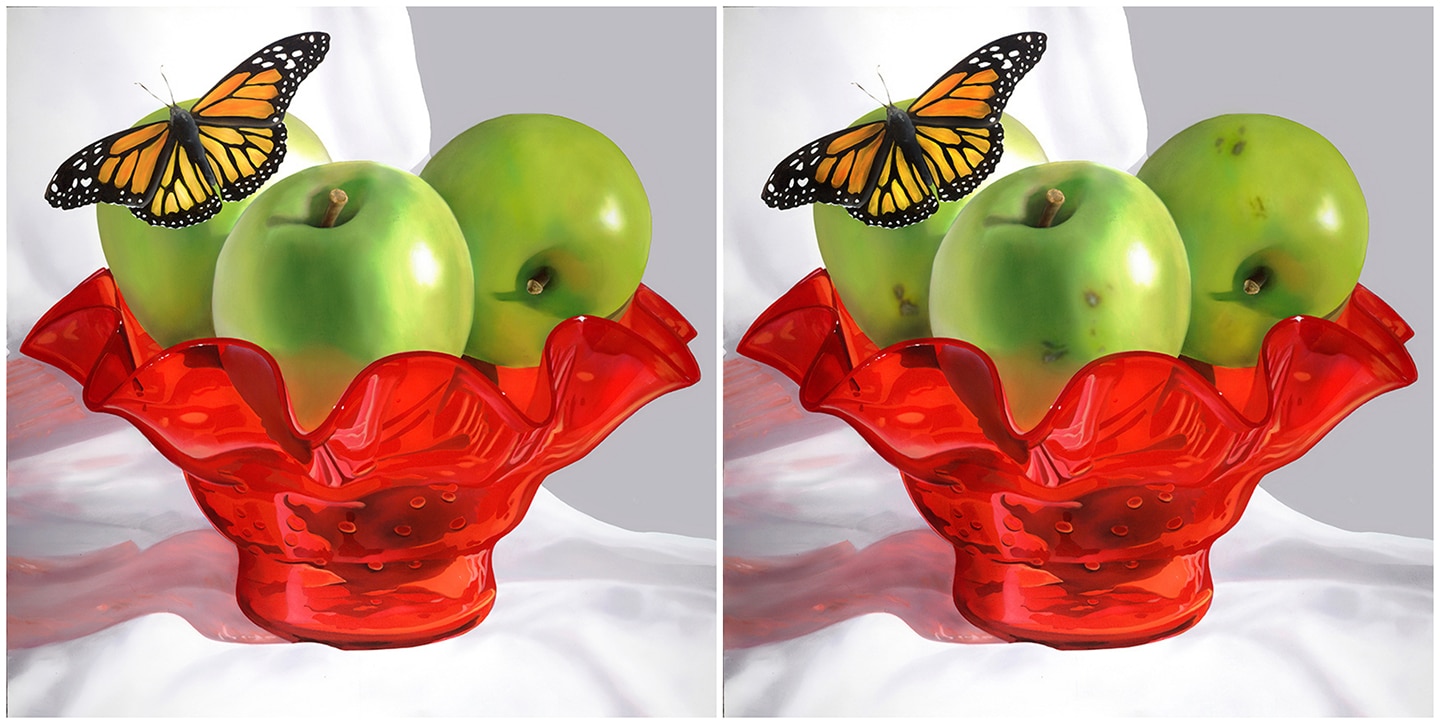A short while after my career as an artist unfolded, I realized I had become a still-life painter. To celebrate “finding myself,” I took a wonderful workshop from Janet Fish, one of my absolute favorite artists, and one of the best still-life painters of today. As the workshop began, Janet shared with us a box of art books and exhibition catalogues that featured some of her artistically accomplished friends — such as Alex Katz. I spent time during the weeklong workshop flipping through the pages of her books. One book in particular mesmerized me. I was unfamiliar with the artist and her remarkable work. “When was her show?” I asked Ms. Fish. She laughed as she pointed out that Giovanna Garzoni painted in Italy in the 1600s.
I was a little embarrassed, and so surprised. First of all, Garzoni was a woman — and a successful artist. Female artists were quite rare in the 17th century. Giovanna Garzoni was considered the first female artist to, successfully, practice the art of still-life painting. And secondly, I was surprised by the vibrant look of her work, which was very different from the dark, cluttered and heavily laden still-life paintings popular in the 1600s.
To me, Garzoni’s style appeared to be very contemporary. Her paintings were luscious and incorporated clear, rich colors. They looked as if they could have been painted present-day. Using only a few elements of fruits, vegetables or flowers as subjects, Giovanna’s macro compositions were bold and uncluttered. She eliminated the elaborate spatial relationships between numerous objects that dominated the compositions of her contemporaries. She allowed only minimal subjects to command interest, and she created lively interactions through textures, shapes and colors rather than through a complicated depth of field.
What I also noticed from studying Garzoni’s exquisite paintings was that they sang with life — because she added a little death. She exaggerated the rusty spots of decay on her elegantly rendered produce and the brittle dried edges on her flowers and foliage. Although I have seen many traditional still-life paintings with this kind of detail added, it was the unexpected modernity of Garzoni’s compositions that allowed me to focus on the beauty she illuminated with a touch of death or decay. Giovanna Garzoni poignantly portrayed the fragile transience of life using only specks of dark paint.
In Italian, the still-life genre is called natura morta, which translates to “dead nature.” This term refers to the stillness, or inanimate properties of the composition’s elements. But I feel this term can also refer to how emotions are imperceptibly stirred when perishable fruits and flowers are captured for a brief moment of existence before their inevitable decay. The delicate rendering of blemished surfaces reminds us to cherish the moments of life, for they are numbered.
Artist Ora Sorensen (orasorensen.com) was born in New York but grew up overseas. She has owned a gallery in Delray Beach, Florida for 20 years, and has also been represented by other galleries across the country. Sorensen now lives and paints in North Carolina, and her paintings are collected worldwide and have been shown in numerous exhibitions.




